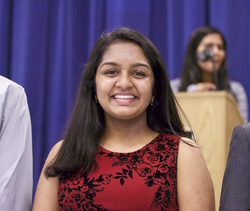|
By Niharika Vattikonda
For budding Scientistas, there are plenty of opportunities to explore the different areas of science, technology, engineering, or mathematics (STEM) during high school. While high school may not give you as much exposure to more specialized fields, it’s often a great place to get started. For example, taking Honors and AP courses in STEM subjects can often give you a better understanding of those subjects and could help you out in college by allowing you to receive credit for or place out of introductory courses. However, the best way by far to jumpstart a STEM career is through extracurricular activities. The five categories below cover most of the different subjects in STEM and encompass activities that are easily accessible to U.S. high school students.

About the Author
Niharika Vattikonda is a junior at Thomas Jefferson High School for Science and Technology in Northern Virginia, where she is focusing on computer science. She was first exposed to coding in middle school through HTML/CSS, studied Java in freshman year, and is now a student at the Girls Who Code Summer Immersion Program in DC. Niharika enjoys STEM outreach and is the founder and CEO of Teens Transforming Technology, a nonprofit that provides access to computer science through workshops and camps for underserved populations, and she is the Events Director for Inspiring Femgineers, another local nonprofit. When she’s not coding or writing, Niharika enjoys participating in Model United nations and writing for her own blog, Teen Thoughts on Politics. Comments? Leave them below!
1 Comment
10/9/2021 05:59:58 am
Amazing write-up! I finally found the type of article I am searching for. Thank you for sharing!
Reply
Leave a Reply. |
The Scientista Foundation, Inc. All Rights Reserved © 2011-2021 | Based in NY | [email protected]
The Network for Pre-Professional Women in Science and Engineering
The Scientista Foundation is a registered 501(c)(3) -- Donate!
The Network for Pre-Professional Women in Science and Engineering
The Scientista Foundation is a registered 501(c)(3) -- Donate!
